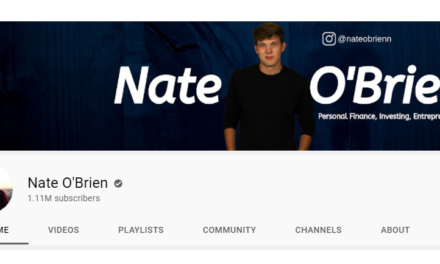Looking Beyond Advertising Revenues
In terms of revenue models that VCs find compelling, advertising continues to play an outsize role. “The predominant model is, and will continue to be, advertising,” says Lee. “There’s still an opportunity to build an ad-supported media company, but you have to really understand the ad space.”
But interest in companies that are experimenting with diversified revenue streams (such as subscription sales, data sales, events, and integrating ecommerce) is high. “We don’t have a definitive business model yet,” says O’Leary. “It’s not ads-only, but I don’t think we know yet how content will be paid for. Ecommerce will be a piece of it; maybe it will be a broadcast model, where ISPs pay to distribute premium content to their end users.”
Sidler recalls a company that investiere opted not to back due to its small size, but that demonstrated the kind of innovative revenue model his investors like to see. “They had a platform making it easy for voiceover artists to create audio versions of news articles that people would pay to hear. The content providers got a third of the revenue, a third went to the platform, and a third went to the voiceover artist.” Adding that it’s hard to generalize, Sidler says that for investiere, an ads-only revenue model would probably be a no-go.
Flight to Quality
Does content quality still matter? Perhaps more than ever. Rich says, “It was a land-grab for a while,” meaning that VC dollars were chasing the sites that were chasing traffic, sometimes leaving commitment to quality in the dust. But now, he says, “users are getting more clever about where they go for information. They know which sites require them to wade through pages of ads before they get to what they want or use repurchased information.” In Catalyst’s case, Rich says that when it sees content that isn’t unique or when a site includes a high degree of repurposed content, it tends not to move forward with consideration.
O’Leary agrees, saying that funders are looking for opportunities in which companies have a positive relationship with their audience, both in the content they offer and in the user experience. “They’re parsing platforms that engage and respect their audience,” he says, staying away from those that repackage stale content or force a user to navigate through multiple screens.
Lee says the quality-checking that sits atop the user-generated content in Angie’s List is an important differentiator. “They’ve decided that it’s better to have a few rich, deep reviews than thousands of less detailed ones. To that end, the Angie’s List team proactively reaches out to reviewers, fills in missing details, and cleans up those that are obviously fraudulent.”
The focus on quality is, according to Boyd, an opportunity for traditional publishers willing to step up to the challenge. “Traditional media players have the best content,” she says. “The problem is they also have traditional infrastructure, which was built for a different world.”
VC Wish Lists
Despite an interest in the space, Rich says that Catalyst doesn’t see many opportunities that meet all its requirements. Right now, only four of its 13 portfolio companies are engaged in digital content. “Either we’re not finding them or there just aren’t that many pure content companies that can [meet the criteria],” he says.
investiere’s funders would love to see companies that tackle the question of copyright infringement in an innovative way, according to Sidler. “Circumventing publisher paywalls just isn’t that hard,” he says. “We’d love to see some robust solutions that would give publishers a way to address copyright infringement.”
O’Leary believes there’s still room for companies that provide greater depth in specific industries. “Amazon pretty much owns the publishing stack now; there’s no part of publishing in which they don’t have a presence,” he says. “Why doesn’t someone do that for, say, real estate? Figure out the problems that homeowners, realtors, and construction companies have and solve them? In this way, publishers can become solutions companies.”
Lessons for Traditional Media Companies
With investment funds flowing to those companies that demonstrate an ability to disrupt traditional media models, the message to traditional media companies is clear. Sidler lays out the implications of the uptick in VC money flowing into the digital content industry in black and white. “A lot of traditional media companies are investing in keeping older users happy, while VCs are looking for investments in those markets where the users will be around for a long time. I don’t personally love BuzzFeed, but it’s building a loyal, young audience.”
StarVest’s Boyd sees the challenges facing traditional publishers as yet another sign of the potential for companies in the digital content ecosystem. She says, “No publisher, at this point, can afford to not jump. It’s a good time for the infrastructure companies that can help them merge content and commerce.”
Finally, Rich has words of advice for traditional media companies, who he says have no time left for incremental change. “Be bold,” he says. “As bold as you think you’ve been over the past few years, in whatever changes you’ve made, you need to step it up.”






